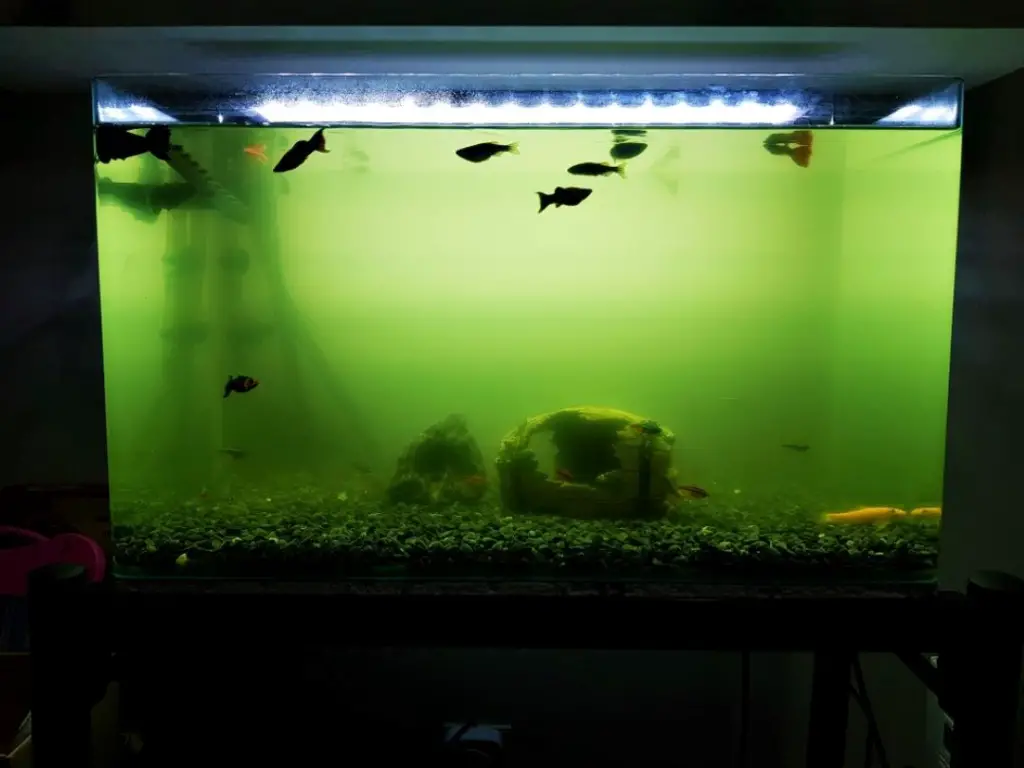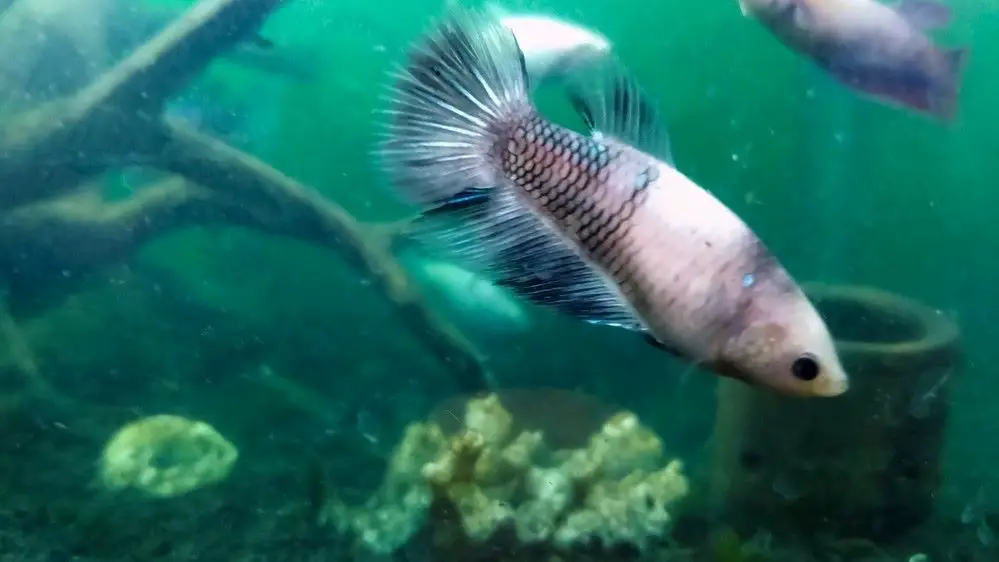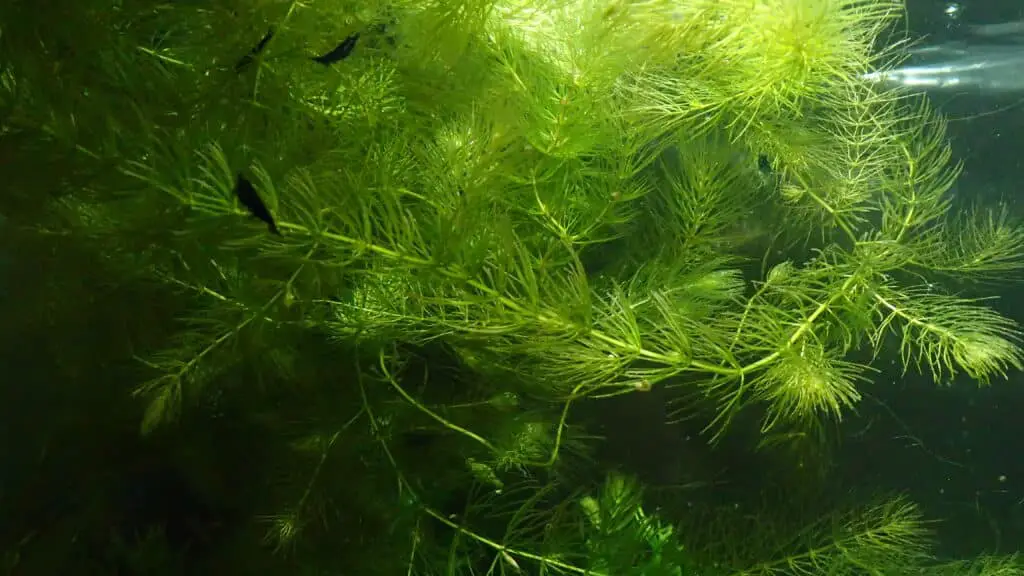Cloudy water in aquariums can be caused by several factors, including overfeeding, poor filtration, algae blooms, bacterial blooms, and excessive debris. To prevent cloudy water and maintain a clear and healthy aquarium
can be caused by several factors, including overfeeding, poor filtration, algae blooms, bacterial blooms, and excessive debris. To prevent cloudy water and maintain a clear and healthy aquarium , it’s essential to address these issues through proper care and maintenance.
, it’s essential to address these issues through proper care and maintenance.
As an aquarium enthusiast with over 40 years of hands-on experience, I’ve had my fair share of aquarium-related issues, and cloudy water is one of the most common ones. Throughout the years, I’ve dealt with a range of species, aquarium sizes, and setups, and I’ve managed to tackle cloudy water issues in all kinds of scenarios. From small home aquariums to large public exhibits, the struggle with maintaining clear water remains consistent. My experiences have taught me the importance of understanding the root causes of this problem and taking preventative measures to ensure a healthy environment for my aquatic friends.
In this post, I’ll share my insights and knowledge gathered from my two decades of aquarium care. I’ve seen the detrimental effects of overfeeding, experienced the challenges of balancing algae growth, and learned the intricacies of maintaining a proper filtration system. Through trial and error, and continuous learning, I’ve discovered strategies that effectively combat cloudy water in aquariums. I hope these insights will help you prevent and manage cloudy water situations, ultimately creating a cleaner, healthier home for your aquatic life.
Causes of Cloudy Water
Overfeeding
Overfeeding is a common cause of cloudy water in aquariums. When fish are given more food than they can consume, the uneaten food decomposes in the water. Decomposing food produces waste products and encourages the growth of harmful bacteria, contributing to cloudy water and poor water quality.
than they can consume, the uneaten food decomposes in the water. Decomposing food produces waste products and encourages the growth of harmful bacteria, contributing to cloudy water and poor water quality.
To prevent overfeeding, follow a strict feeding schedule and provide only the amount of food that your fish can consume in a few minutes. Additionally, consider using a sinking pellet or tablet food to prevent food from floating at the surface and decomposing. Be sure to promptly remove any uneaten food from the aquarium.
Poor filtration
Poor filtration is another common cause of cloudy water in aquariums. Filtration helps to remove waste products, debris, and other contaminants from the water, and a lack of adequate filtration can result in cloudy water and other water quality issues.
Choosing the right filter for your aquarium is essential to prevent poor filtration. There are several types of filters available, including hang-on-back filters, canister filters, and power filters, and each has its own advantages and disadvantages. Factors to consider when choosing a filter include the size of your aquarium, the type of fish and plants you have, and the amount of maintenance you are willing to do.
It’s also essential to maintain your filters regularly. This may involve cleaning or replacing the filter media and ensuring the filters operate correctly. Check the manufacturer’s recommendations for how often to clean or replace filter media and perform necessary maintenance.

Algae blooms
An algae bloom is another common cause of cloudy water in aquariums. Algae blooms occur when there is excessive growth of algae in the water, resulting in cloudy water and other water quality issues.
Several factors can contribute to an algae bloom, including excess light, high levels of nutrients, and poor water circulation. To prevent algae blooms, limit the amount of light your aquarium receives to around 8-10 hours a day. Use a timer to ensure consistent lighting, and consider using LED lights, which produce less heat and encourage less algae growth.
Controlling the number of nutrients in the water is also essential in preventing algae blooms. Perform regular water changes to remove excess nutrients, and avoid overfeeding your fish. Ensure that water is properly circulated by using a water pump or an air stone, which will help distribute nutrients evenly throughout the aquarium.
In addition, it’s essential to regularly clean the sides of the aquarium and remove any algae that may be present. You can also use a commercial algae control product to help reduce algae growth in your aquarium.
Bacterial blooms
Bacterial blooms are another common cause of cloudy water in aquariums. Bacterial blooms occur when bacteria grow excessively in the water, which can result in cloudy water and other water quality issues.
Several factors can contribute to a bacterial bloom, including overfeeding, poor filtration, and insufficient water changes. To prevent bacterial blooms, it’s crucial to control feeding, maintain adequate filtration, and perform regular water changes.
In addition, it’s essential to regularly monitor water chemistry and test for the presence of harmful bacteria. You can also add beneficial bacteria to your aquarium to help maintain
a healthy bacterial balance and prevent the growth of harmful bacteria. Beneficial bacteria can be added through the use of commercially available bacterial supplements, which can help speed up the establishment of a healthy bacterial colony in your aquarium.

Preventing Cloudy Water
Regular water changes
Performing regular water changes is crucial to maintain a healthy aquarium and prevent cloudy water. Water changes help to remove excess nutrients, waste products, and other contaminants from the water. Aim to change approximately 25% of the water in your aquarium every 2-4 weeks, depending on the size and bioload of your aquarium.
every 2-4 weeks, depending on the size and bioload of your aquarium.
Monitoring water chemistry
Regularly monitoring the water chemistry of your aquarium is essential to ensure a healthy environment for your fish and other aquatic creatures. Test the water for parameters such as ammonia , nitrite, nitrate, pH, and alkalinity. These tests can help you identify potential problems early and take corrective action to prevent cloudy water and other water quality issues.
, nitrite, nitrate, pH, and alkalinity. These tests can help you identify potential problems early and take corrective action to prevent cloudy water and other water quality issues.
Proper aquarium maintenance
Maintaining your aquarium is key to preventing cloudy water. This includes regular cleaning of the aquarium glass, substrate, and decorations. Remove any visible algae and clean the sides of the aquarium with an algae scraper or a sponge. Vacuum the substrate to remove debris and waste products that can contribute to cloudy water.

Adding beneficial bacteria
Adding beneficial bacteria to your aquarium can help maintain a healthy bacterial balance and prevent the growth of harmful bacteria that cause cloudy water. Beneficial bacteria can be added through the use of commercially available bacterial supplements or by introducing live plants, which can harbor beneficial bacteria.
Patience in Aquarium Maintenance: Letting Nature Take Its Course
In my decades of experience as an aquarium hobbyist, I’ve learned that sometimes the best course of action is to simply wait and allow nature to run its course. There will be instances when your aquarium water becomes cloudy, despite your best efforts in maintaining the ideal conditions and keeping up with routine checks. The tank parameters might all be within optimal ranges, the filtration system functioning perfectly, yet the cloudiness persists.
Understanding the natural processes at work in your aquarium becomes crucial in such cases. Your aquarium is a miniature ecosystem, teeming with life not just in the form of the fish you care for, but also an array of microorganisms – including bacteria and algae – that help to maintain the balance.
Bacterial and algae blooms are natural occurrences within this ecosystem and often, they are self-limiting. This means they can resolve on their own over time as the balance in the aquarium is restored. Blooms often occur because there’s a sudden surge in available nutrients. As these nutrients get consumed over time, the population of bacteria or algae that had bloomed will dwindle, resolving the cloudiness.
During such periods, it’s crucial to continue monitoring your aquarium parameters to ensure nothing goes out of balance. If all parameters continue to read normal, the best action might be to ‘sit on your hands’ and let nature take its course. Patience is often a virtue in aquarium care. Continue your regular maintenance routine, but avoid drastic measures like excessive cleaning or medication, which could disrupt the balance further.
As seasoned aquarium keepers often say, ‘The solution to pollution is dilution.’ Regular, small water changes can help keep nutrient levels in check and prevent future blooms. But remember, each aquarium is unique and can respond differently to changes. Your experience, intuition, and patience become key tools in managing these natural processes.
Bear in mind that this advice applies when you are confident that all other factors such as feeding, filtration, and overall tank health are in order. When in doubt, don’t hesitate to seek advice or further information.

The Role of Aquatic Plants in Controlling Cloudy Water
Another natural solution to dealing with persistent cloudy water is increasing the number of live plants in your aquarium . Aquatic plants are an invaluable part of the ecosystem in your tank. They consume the same nutrients that often fuel bacterial and algae blooms, effectively outcompeting them for resources.
. Aquatic plants are an invaluable part of the ecosystem in your tank. They consume the same nutrients that often fuel bacterial and algae blooms, effectively outcompeting them for resources.
In my experience, introducing more plants to an aquarium experiencing a bloom often leads to a significant improvement. Not only do they absorb excess nutrients, but they also provide additional benefits. They produce oxygen, provide hiding spots and breeding grounds for your fish, and overall contribute to a more visually appealing setup.
From hardy species like Java fern and Anubias, which are perfect for beginners, to more demanding varieties like Dwarf Hairgrass or Rotala, there’s a plant suitable for every type of aquarium. Bear in mind that plants also need care, and some require specific lighting and nutrient levels to thrive.
and Anubias, which are perfect for beginners, to more demanding varieties like Dwarf Hairgrass or Rotala, there’s a plant suitable for every type of aquarium. Bear in mind that plants also need care, and some require specific lighting and nutrient levels to thrive.
Always remember that your aquarium is a delicate ecosystem where balance is key. Sudden or dramatic changes can be disruptive. If you decide to introduce more plants, do it gradually and monitor your tank parameters closely to see how it responds to the new additions.
Conclusion
Cloudy water in aquariums can be caused by several factors, including overfeeding, poor filtration, algae blooms, bacterial blooms, and excessive debris. It’s essential to address these issues through proper care and maintenance to prevent cloudy water and maintain a clear and healthy aquarium.
By following these tips and staying vigilant about the health and clarity of your aquarium, you can ensure that your fish and other aquatic creatures live in a clean, healthy environment and thrive for years to come. Remember to control feeding, maintain adequate filtration, perform regular water changes, limit light exposure, monitor water chemistry, clean the aquarium regularly, and add beneficial bacteria as needed.
If you need any help with any issue, please feel free to contact me.
Happy Shrimp Keeping.
FAQ Cloudy Aquarium Water
- How do I fix cloudy water in my fish tank? To fix cloudy water, you must first identify its cause. If it’s due to overfeeding or decaying organic matter, reduce feeding and clean the tank more frequently. Consider adding beneficial bacteria or adjusting the tank’s temperature and light if it’s due to a bacterial bloom. In some cases, installing a more effective filtration system or performing regular water changes can also help clear the water.
- Does cloudy water mean ammonia? Cloudy water could be an indicator of high ammonia levels if it’s caused by overfeeding or an excess of decaying matter. Both lead to ammonia spikes as the waste decomposes. However, the only sure way to know is by testing the water with an ammonia test kit.
- Why does my aquarium look a little cloudy? Minor cloudiness can occur due to various reasons such as a new setup (new tank syndrome), overfeeding, insufficient filtration, or bacterial blooms. It’s important to monitor the tank and take corrective action if the cloudiness doesn’t clear on its own after a few days.
- How long does bacterial bloom last? A bacterial bloom can last anywhere from a few days to a couple of weeks, depending on the conditions in the tank. This process can be accelerated by correcting any water quality issues and introducing beneficial bacteria to outcompete the harmful ones.
- Should I clean my fish tank if it’s cloudy? Yes, cleaning the tank can help remove excess nutrients and debris that contribute to cloudy water. However, avoid cleaning all of your filters at the same time as this can disrupt the beneficial bacteria colonies that aid in maintaining clear water.
- Does cloudy water bother fish? While fish can tolerate a degree of cloudiness, persistent or extreme cloudiness can stress fish and even lead to illness. It’s important to resolve the issue promptly to maintain a healthy environment for your fish.
- How long does it take for cloudy aquarium water to clear? Depending on the cause, cloudy water can take a few hours to a couple of days to clear. If the issue is addressed promptly and correctly, most tanks will clear up within a week.
- Will bacterial bloom go away on its own? In some cases, a bacterial bloom will resolve on its own as the bacteria use up the excess nutrients and their population decreases. However, this may take time and it’s usually best to take action by adjusting feeding amounts, improving filtration, and considering the use of beneficial bacteria supplements.
- Is cloudy water OK? Short-term cloudiness isn’t typically a cause for concern, especially in new aquarium setups. However, long-term or intense cloudiness can be harmful to your fish and should be addressed to ensure the health of your aquarium.
